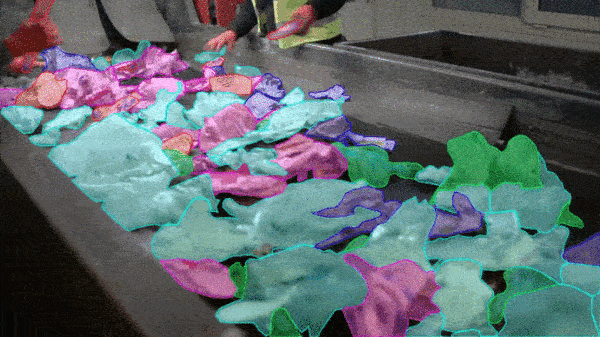How Image Annotation Projects Transform Waste Management

Artificial intelligence has revolutionized industries. But while most people have heard of self-driving cars and facial recognition software, many of us are unaware of the enormous impact AI has had for the waste management and recycling sectors.
Imagine a waste management facility. Are you picturing rows of machines? That’s closer to reality than you may think. AI and robotics are constantly improving the processes we rely on to collect, transport, sort, and process all types of waste, from medical waste to biohazard waste in real time.
According to the United States Environmental Protection Agency (EPA), 267.8 million tons of municipal solid waste was generated in 2017, amounting to 4.51 pounds per person, per day. In other words, waste management facilities can use all the help they can get. Let’s take a look at the diverse range of applications of AI and target object processing projects for waste management.

Intelligent Bins
The role of AI in waste management begins with intelligent garbage bins. Waste management companies take advantage of Internet of Things (IoT) sensors to monitor the fullness of trash receptacles throughout the city. This allows municipalities to optimize waste collection routes, times, and frequencies.
How does optimization benefit you? Optimization improves the speed at which garbage bins are emptied while lowering the cost of labor and fuel consumption. But IoT sensors can sense more than just fullness.
Computer vision annotation and machine learning algorithms allow these sensors to distinguish between different types of garbage as the bins are being filled. For example, an intelligent waste bin developed by Bin.e uses machine learning to identify, categorize, and sort waste immediately after it’s thrown away.
Smart bins are often paired with an app that lets users know the location of the nearest available waste bin, preventing bins from overflowing.
Smart Sorting
Until all trash bins are intelligent, waste needs to be sorted at a waste management facility. When it comes to the role of artificial intelligence in automated sorting, one statistic tells you all that you need to know: human workers sort between 30 and 40 recyclables per minute while AI-powered machines can handle up to 160. Moreover, machines can work around the clock.
The question is, how does it all work? The role of AI in smart sorting is similar to the role of AI in manufacturing—items on a conveyor belt, whether that includes waste or new products, are scanned with cameras and analyzed by deep learning algorithms. Robotic arms and other apparatuses then pull the data labeled items off the belt for further processing which, in the case of waste management, includes sorting.

Sorting plastic and recycling waste is a major bottleneck for most waste management facilities. What is the reason for this? The vast majority of recycling processes begin with a single-sort system, meaning all recycling materials end up in the same box. When this box reaches a facility, items like plastic and cardboard must then be separated.
When it comes to sorting, the role of AI in recycling becomes incredibly intricate. That’s because AI-powered sensors are a vast improvement compared to traditional optic sensors. Segmentation in image processing allows to detect items made from different materials as well as nuances between items of the same material, including whether an item has been chemically contaminated, ensuring purity of the waste stream.
Unlocking the Future of Waste Management
Traditionally, waste management has been a largely manual process. Artificial intelligence, machine learning image processing, computer vision models, robotics, image segmentation in image processing and other innovative technologies have allowed municipalities to eliminate much of the need for manual labor, cutting costs and maximizing efficiency.
Such cutting-edge technologies will transform the way we approach the management of other types of waste. For example, StartRocket plans on removing space debris using space-grade polymeric foam. Another company, Winnow Solutions, uses AI to weigh food waste in commercial kitchens. The goal is to help kitchens reduce waste over time by assigning a dollar value to its waste.
Professional Data Annotation Services for Your Machine Learning Project
Do your projects on image processing have the potential to modernize outdated practices and promote sustainability? We’re here to help.
Every image segmentation and machine learning project relies on the high level quality of its training data. That’s why leading AI companies rely on professional image annotation tools like Keymakr. We provide pixel-perfect type of image annotation and video annotation. And for sure meet your deadlines and fit your budget.
Get to market of image processing techniques faster with Keymakr. Contact a team member to book your personalized image detection demo today.




